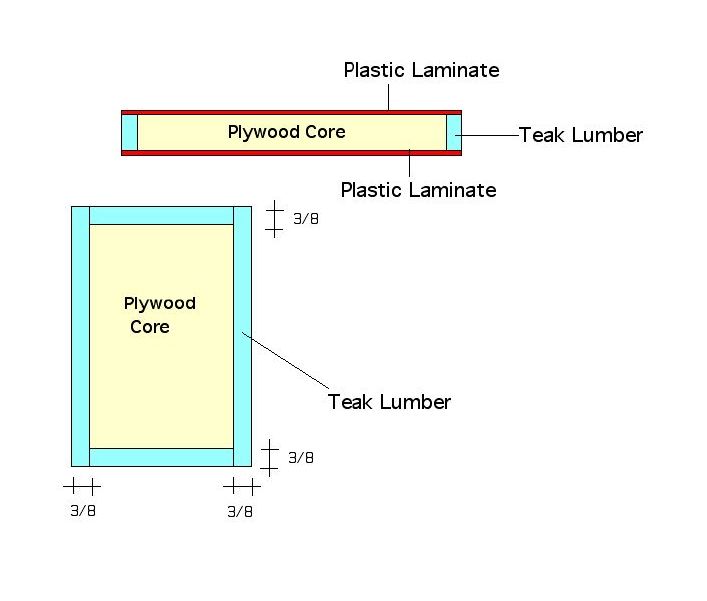Question
My intended method of construction for teak cutting boards is as follows: rip rough stock to 3" or less widths, clean edged with lacquer thinner and laminate with west systems epoxy or Gorilla Glue. Comments concerning these methods and final care once delivered would be appreciated.
Forum Responses
(Architectural Woodworking Forum)
From contributor K:
I have two questions I don't know the answers to so I'm wondering if you have considered them. The glue you are planning to use, is it FDA approved for direct food contact? The second question is, is teak ok for direct food contact? I would want to know the answer to these before going ahead with this project.
You might also run at least a couple of cross-grain dado cuts on the back and fill them with glued-in sticks. On boats, I've gone so far as to put stainless all-thread rods through the whole thing with recessed and plugged holes.
For yacht work, the Teak often has a holly or maple strip placed between each piece. This looks great but also eliminates 1/2 of the oily surfaces associated with the teak. Either way, teak is certainly not the best choice when it comes to gluing and laminating and your biggest challenge is keeping it all together.
I am afraid I don't like Epoxy either for any clamped glue-joints. It all squeezes out leaving only a very thin, weak film. I've had Teak glue-joint failures with both Epoxy and Gorilla glue. The Gorilla stuff will foam all over the place and leave your paws looking like the label. I think I could use some advice myself on the glue question.
As others have said, you've got some issues with teak. For starters you should rip and rotate 90 degrees so the face of the cutting board ends up being side grain (unless it's quarter sawn teak). Then the gluing - epoxy or poly should be ok, because a cutting board shouldn't require that much strength out of the glue line. But as others have said, I'd think you'd want the smallest glue-line possible, which means very tight clamping, and that's not the best scenario for epoxy. And then there's the toxicity question with teak.
And lastly, even if you get past all the above, you're still left with a cutting board made of a wood that is very abrasive. All that silica that makes teak so very hard on tools will have a similar detrimental effect on the edge of the kitchen knife. It reminds me of some of those "cutting boards" made of glass I saw years ago. My mother had one and it made me shudder every time I saw her use the beautiful Japanese laminated steel knife I gave her on it. And she frequently complained of the knife being dull.
Using two square is the preferred stock size for this sort of work. We have done several huge teak jobs over the last few years and have had great success with this method. We do use stainless all-thread as a safety precaution (and permanent clamp) in exposed barbecue countertops - we are located in the tropics and exposed teak either cooks in the sun or gets drenched with rain in alternating doses.
Comment from contributor A:
I am living in N. Thailand and we have a wealth of old-growth (reclaimed) teak. My experience with teak, cutting boards and glue is as follows:
Teak is safe for cutting boards - some people are allergic (mostly respiration) to teak dust or teak oil. Teak wood alone does not affect people.
Glue - gorilla is waterproof, dishwasher safe and foodsafe, although I’ve never been able to get their FDA certificate. The upside is that it has a very short curing time. The downside is it’s expensive and can be messy.
Teak oil has never affected our glue joints - we take no special care.
End-grain boards are far superior to long grain boards. I think that the old-growth teak end grain chopping board is a really nice board - basically maintenance free, smells of garlic, etc disappears after a couple of hours and it leaves almost no knife marks.
